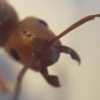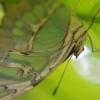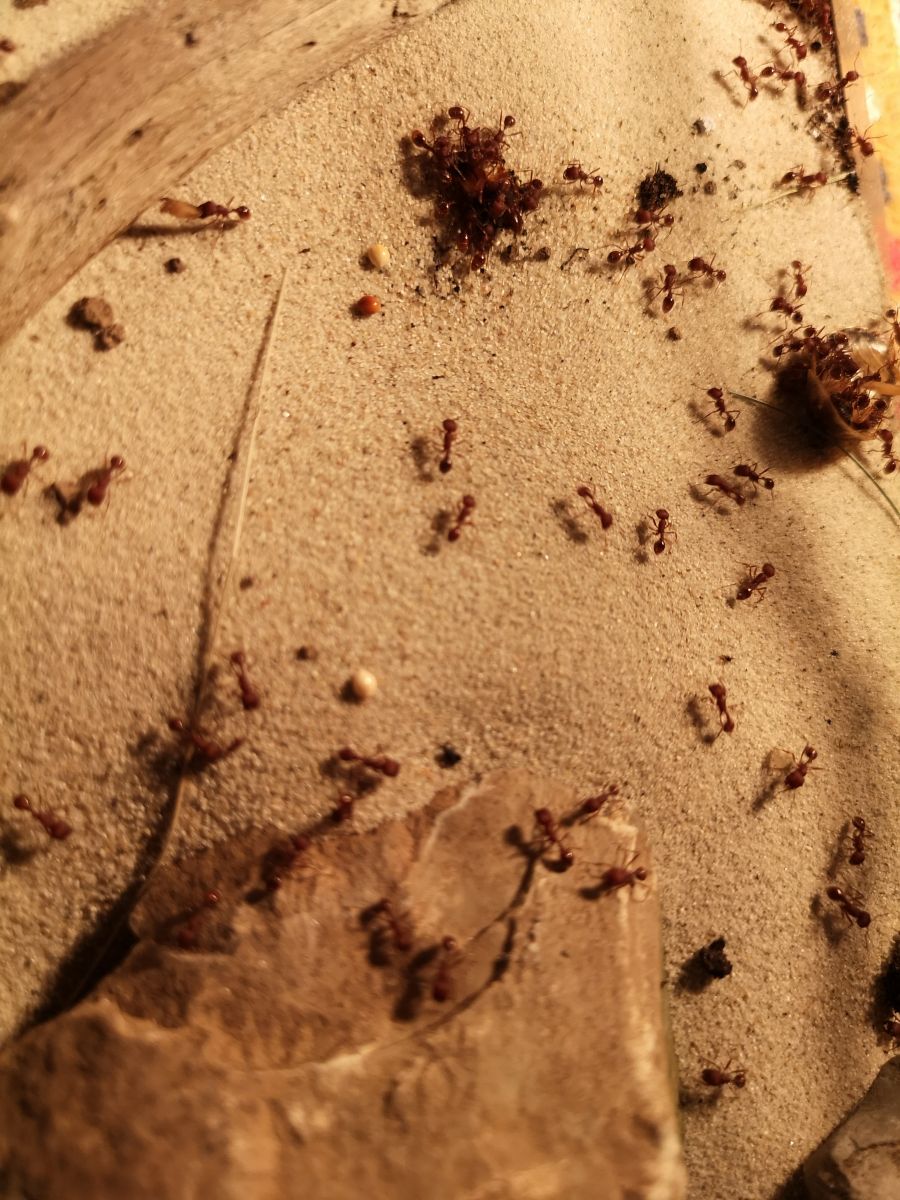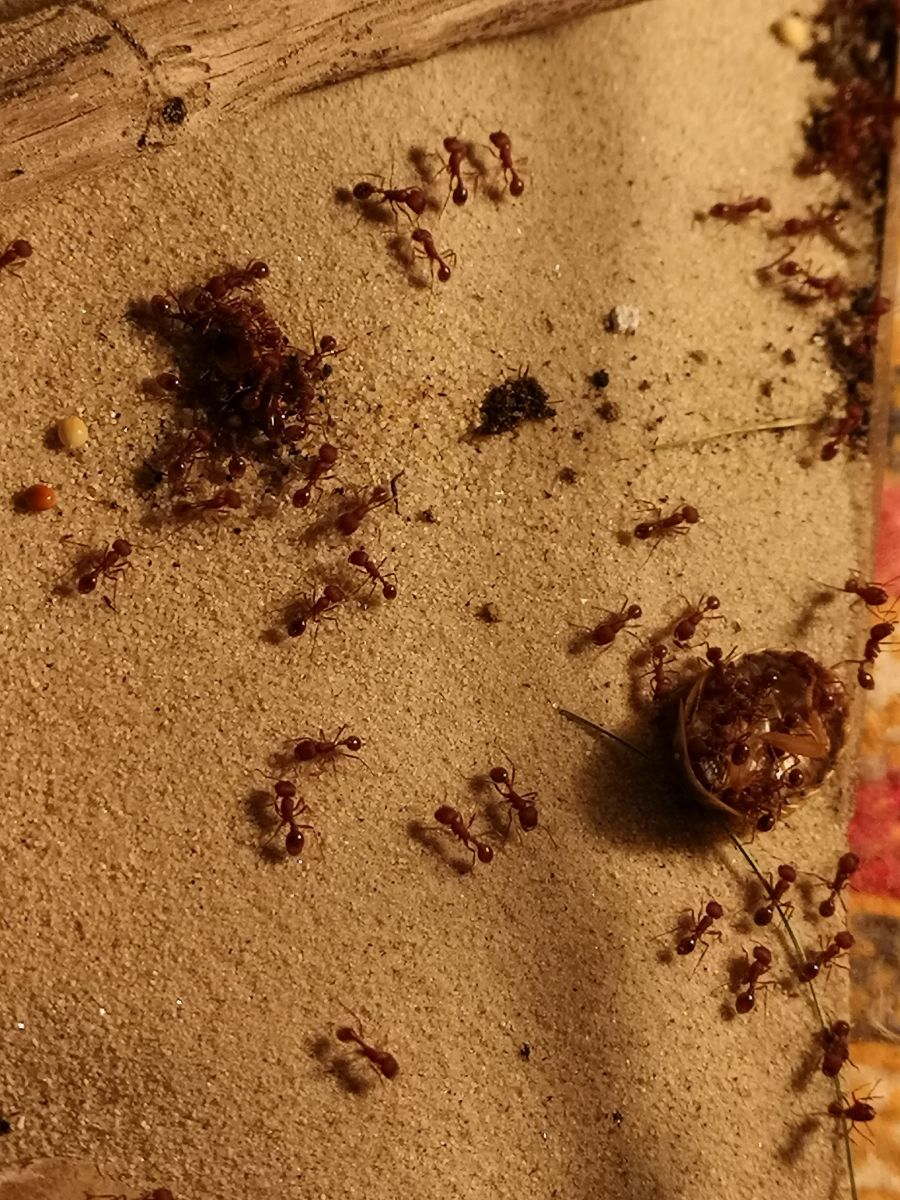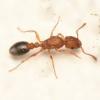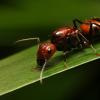Hello guys,
I started last year in 2017, August with a queen that was brood boosted but lost unfortunately the majority of the brood that was given to her through a rather rough delivery (maybe the delivery guy threw the package) that caused the water tank to leak out. I was able however to save the queen + 2 pupae (were actually 7 but only 2 seemed okay and hatched). My colony started with 2 workers and finally had their own brood that grew soon to become new workers. If I remember correct then it took the colony about 2 months to get their first own workers but from there all started growing automatically in phases with always brood in all kinds of stages available. Today, 1 year later my colony measures around 500 workers and even does not mind collecting living insects with their deadly stinger and strong mandibles. I really respect those ants while handling them, I still remember my first Pogonomyrmex sting I had when I was about 17 years old close to a beach in california. It was also that day that another red Pogonomyrmex species that I couldn't identify that time stung me, the pain felt similar to an cut from a broken glass and lasted for a few minutes. I can confirm that even Pogonomyrmex occidentalis can sting painfully it feels around the same as the stung of the other one back then in California. From my experience and being stung by all sorts of ants before I can personally do this ranking: 1. Paraponera clavata, 2. Pogonomyrmex occidentalis, 3. Solenopsis geminata, 4. Pachycondyla sp.(Taiwan) 5.Myrmica rubra/ruginodus 6. Tetramorium bicarinatum. I saw on my Pogonomyrmex occidentlis how potent their poison is while I was feeding them an living mature blaptica dubia (argentinian wood roach) and in matter of minutes it died to their poison, even though roaches are usually quite difficult to kill.
I first kept my colony in a 3D-Nest but after a while it felt quite small and was getting a bit dirty inside, here is a picture of their former nest:
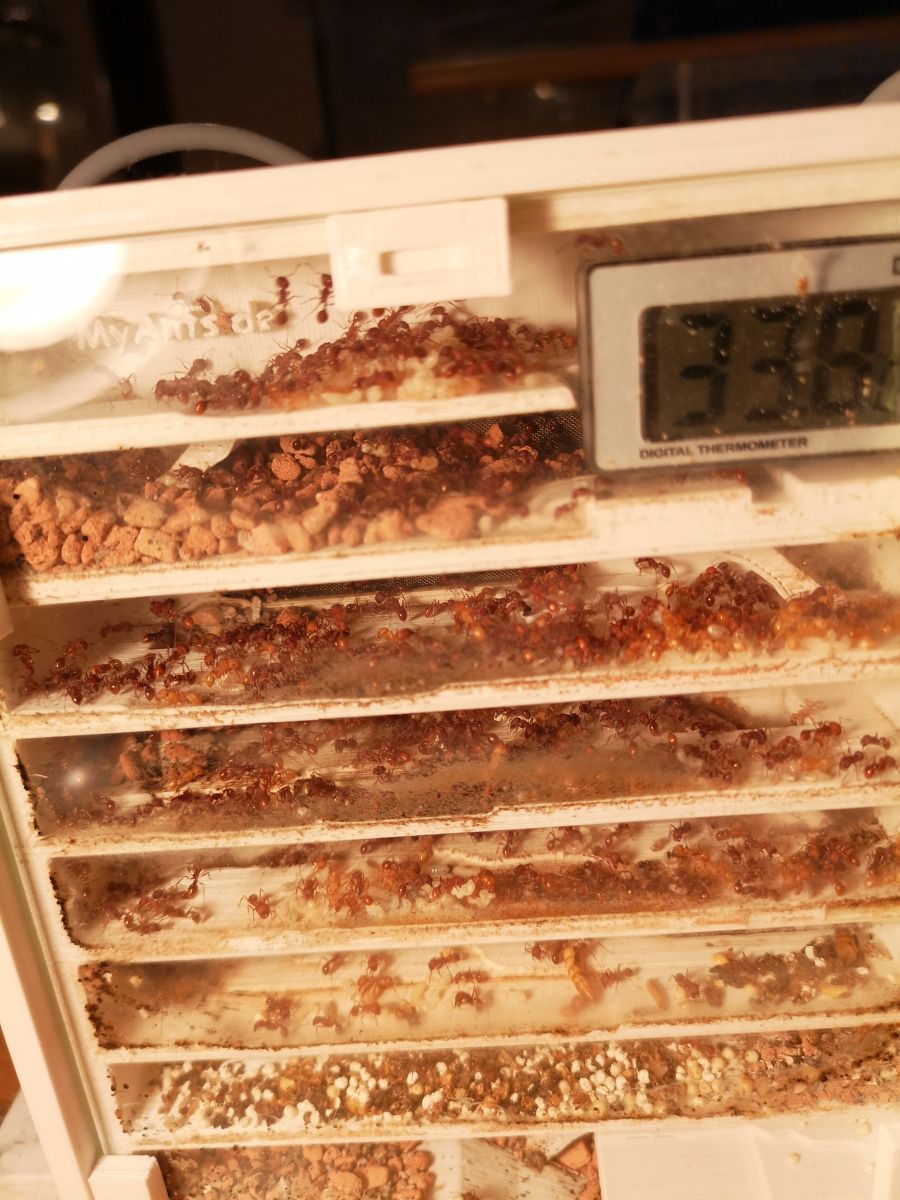
I decided then to offer them a way bigger setup that consists of an handmade/selfmade Ytong(aerated concrete)-nest, with also an nice looking arena that resembles a desert and also gets some low vegetation from me like living stones and an aloe plant:
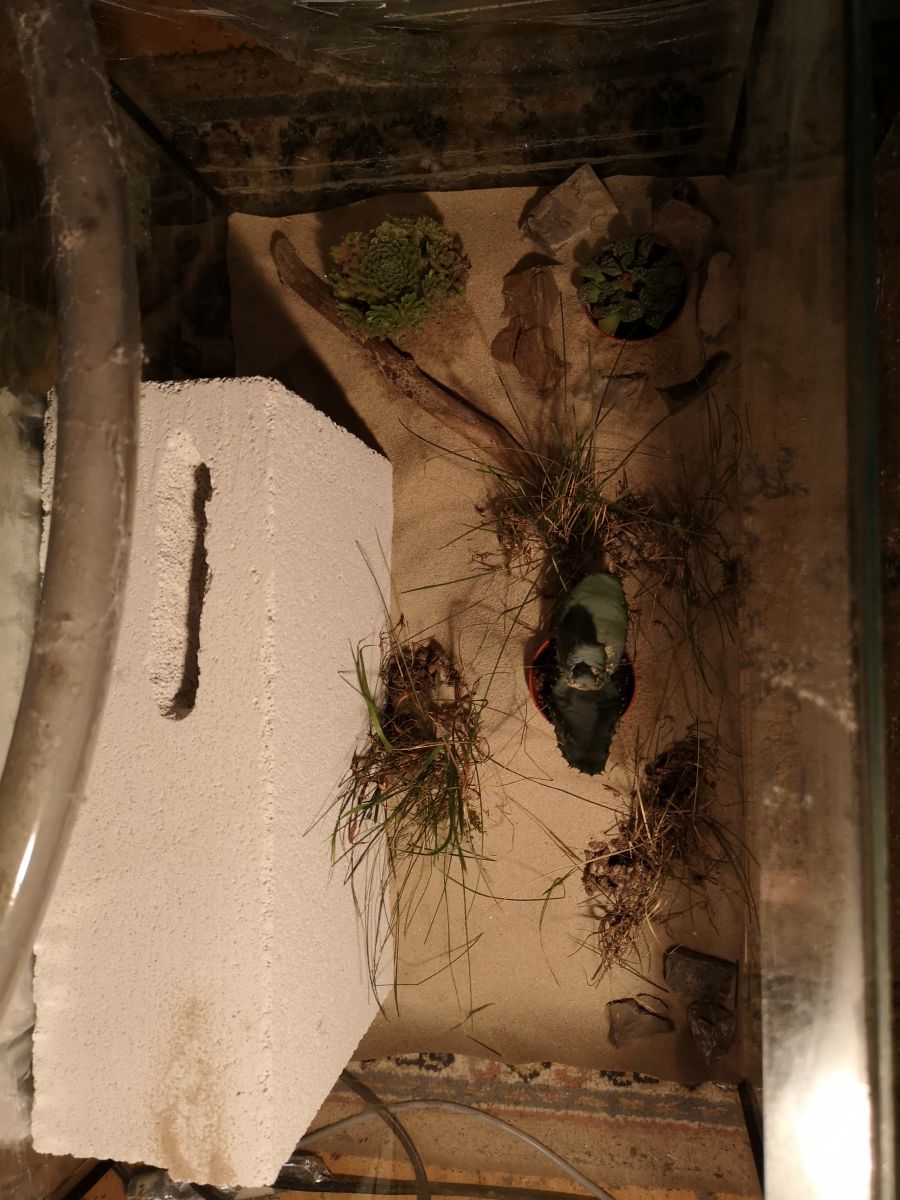
I made a little video about the life inside the Ytong nest:
https://www.youtube....h?v=2xqUwbkyy-U
The queen is not shown in the video and it worried me so I decided to check on her where she could be and there I found here, she was at the top of the chamber in the corner surrounded by workers:
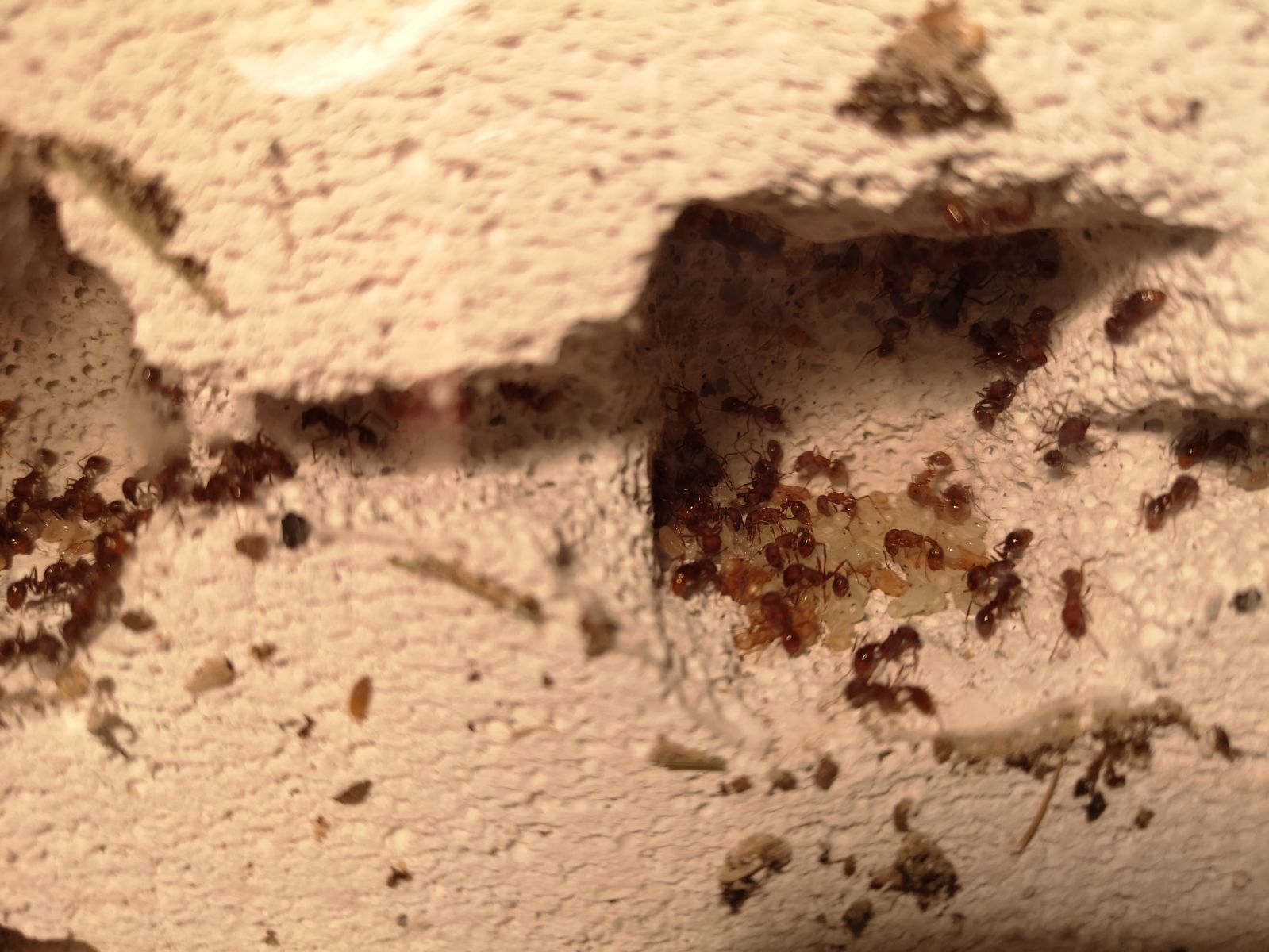
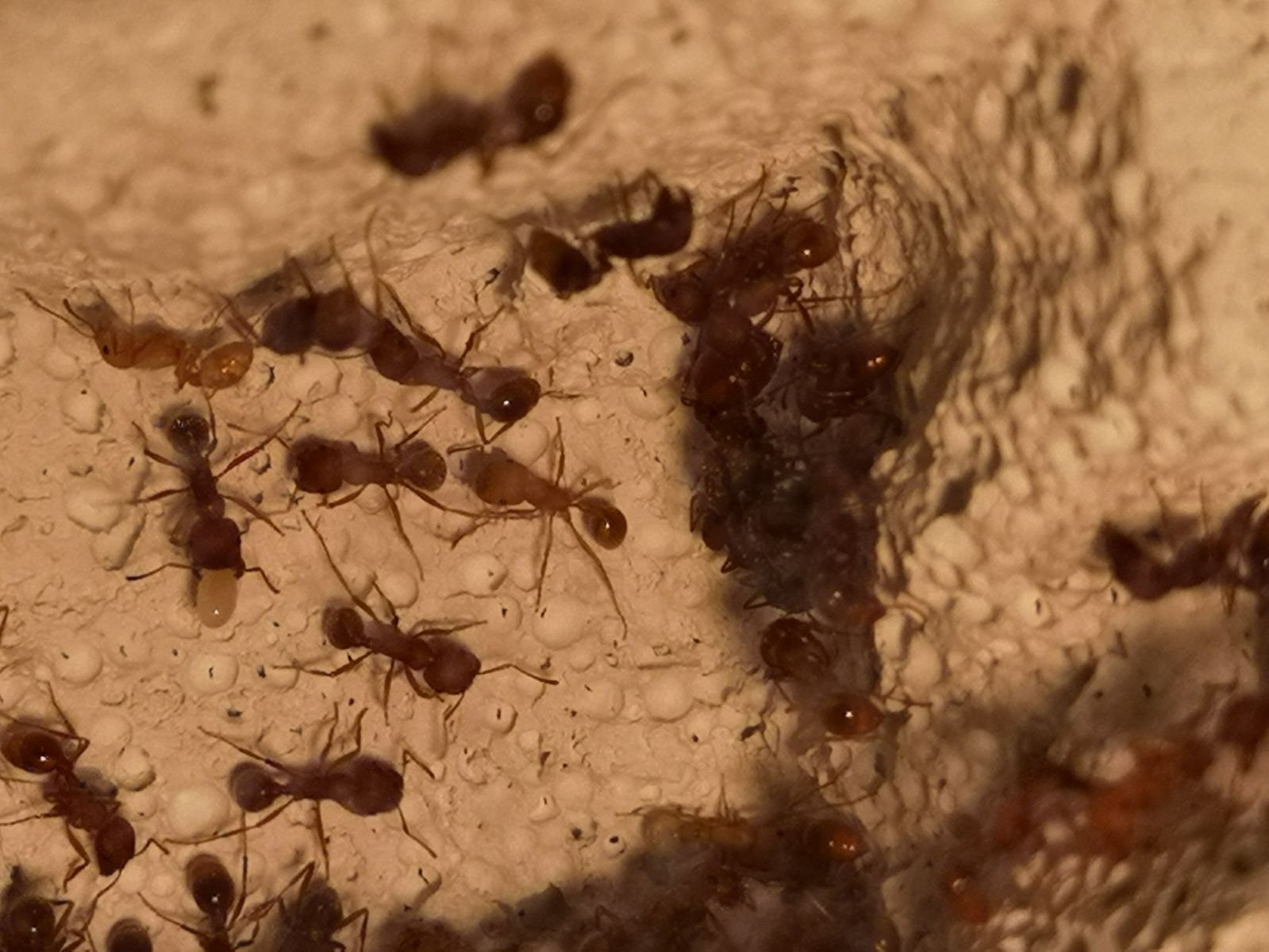
They are definately now 1 of my favorite ant species to keep. What I love about them is their lifestyle and behavior. It is really fun to see them collect seeds and hunt insects down with their potent stinger, their size is also not bad for keeping and makes it easier to observe them than way smaller species. The fact that they actually put their trash on self made trash hills in the arena makes it easier for me to clean their setup as well as the fact that they barely leave leftovers of insects that I feed them dead or alive, 1 reason why that is could be their stronger mandibles in comparison to other species.
Greetings,
Marcel
Edited by marcel, August 14 2018 - 5:35 PM.




